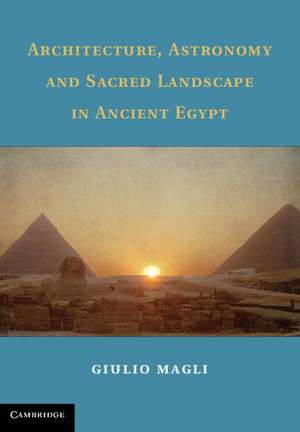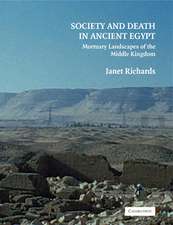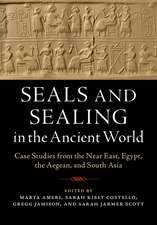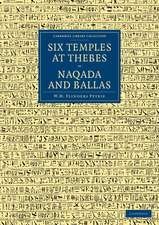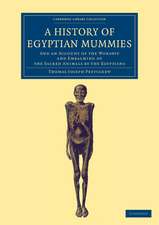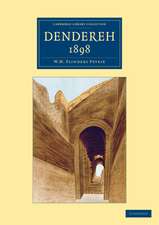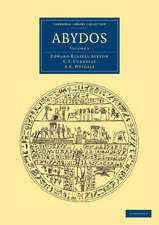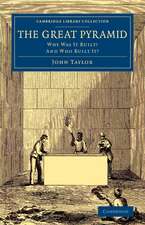Architecture, Astronomy and Sacred Landscape in Ancient Egypt
Autor Giulio Maglien Limba Engleză Hardback – 21 iul 2013
| Toate formatele și edițiile | Preț | Express |
|---|---|---|
| Paperback (1) | 289.78 lei 6-8 săpt. | |
| Cambridge University Press – 6 feb 2019 | 289.78 lei 6-8 săpt. | |
| Hardback (1) | 685.30 lei 3-5 săpt. | |
| Cambridge University Press – 21 iul 2013 | 685.30 lei 3-5 săpt. |
Preț: 685.30 lei
Preț vechi: 796.87 lei
-14% Nou
131.17€ • 142.53$ • 110.26£
Carte disponibilă
Livrare economică 31 martie-14 aprilie
Specificații
ISBN-10: 1107032083
Pagini: 284
Ilustrații: 61 b/w illus. 18 maps 7 tables
Dimensiuni: 185 x 261 x 15 mm
Greutate: 0.77 kg
Ediția:New.
Editura: Cambridge University Press
Colecția Cambridge University Press
Locul publicării:New York, United States
Cuprins
Part I: 1. A land for eternity; 2. A king who looks at the stars; 3. The lords of the horizon; 4. A mirage from Heliopolis; 5. Sons of the Sun God; 6. The lost pyramid; Part II: 7. Renaissance at the winter solstice; 8. A valley for the kings; 9. The horizon of the Aten; 10. The last of the greats.
Recenzii
Descriere
This book examines the interplay between astronomy and dynastic power in the course of ancient Egyptian history, focusing on the fundamental role of astronomy in the creation of the pyramids and the monumental temple and burial complexes. Bringing to bear the analytical tools of archaeoastronomy, a set of techniques and methods that enable modern scholars to better understand the thought, religion and science of early civilizations, Giulio Magli provides in-depth analyses of the pyramid complexes at Giza, Abusir, Saqqara and Dahshur, as well as of the Early Dynastic necropolis at Abydos and the magnificent new Kingdom Theban temples. Using a variety of data retrieved from study of the sky and measurements of the buildings, he reconstructs the visual, symbolic and spiritual world of the ancient Egyptians and thereby establishes an intimate relationship among celestial cycles, topography and architecture. He also shows how they were deployed in the ideology of the pharaoh's power in the course of Egyptian history.
